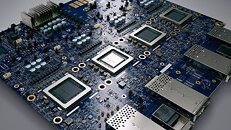
ASUS Intros X870 MAX Gaming WiFi7 Motherboard
ASUS today introduced the X870 MAX Gaming WiFi7 motherboard. This Socket AM5 motherboard comes in two color-based variants—its default black, and the white X870 MAX Gaming WiFi7 W, which features a white PCB, besides white/silver heatsinks. The X870 MAX Gaming is positioned below even the TUF Gaming X870 Plus, and separate from the company's Prime series. It is designed to lure gaming PC builders away from the likes of the GIGABYTE Gaming X and MSI Gaming Plus series. The board is built in the ATX form-factor and draws power from a combination of 24-pin ATX and two 8-pin EPS connectors. It features a 12+2+1 phase CPU VRM that uses 80 A-rated power stages.
The Socket AM5 is wired to four DDR5 DIMM slots, a PCI-Express 5.0 x16 slot, and just the one M.2 Gen 5 x4 NVMe slot. The second CPU-attached NVMe interface is wired out as M.2 Gen 4 x4. The third M.2 slot is Gen 4 x4 and wired to the X870 FCH. The board also puts out four SATA 6 Gbps ports. Besides the main Gen 5 x16 PEG slot, the board has three other physical x16 slots, two of these are Gen 4 x1, and the last one Gen 3 x1. Display connectivity includes an HDMI, and a DisplayPort that's wired to the board's two 40 Gbps USB4 type-C ports. Other USB ports include a 10 Gbps USB 3.2 Gen 2; three 5 Gbps USB 3.1 Gen 1, and four USB 2.0, there is a 20 Gbps USB-C header, besides two additional 5 Gbps ports through a standard header.
The Socket AM5 is wired to four DDR5 DIMM slots, a PCI-Express 5.0 x16 slot, and just the one M.2 Gen 5 x4 NVMe slot. The second CPU-attached NVMe interface is wired out as M.2 Gen 4 x4. The third M.2 slot is Gen 4 x4 and wired to the X870 FCH. The board also puts out four SATA 6 Gbps ports. Besides the main Gen 5 x16 PEG slot, the board has three other physical x16 slots, two of these are Gen 4 x1, and the last one Gen 3 x1. Display connectivity includes an HDMI, and a DisplayPort that's wired to the board's two 40 Gbps USB4 type-C ports. Other USB ports include a 10 Gbps USB 3.2 Gen 2; three 5 Gbps USB 3.1 Gen 1, and four USB 2.0, there is a 20 Gbps USB-C header, besides two additional 5 Gbps ports through a standard header.




































































